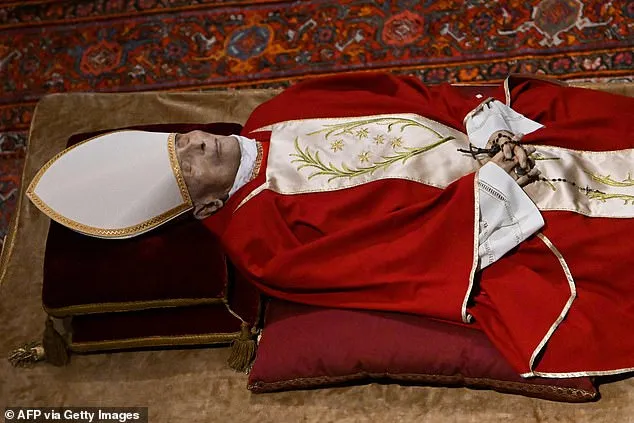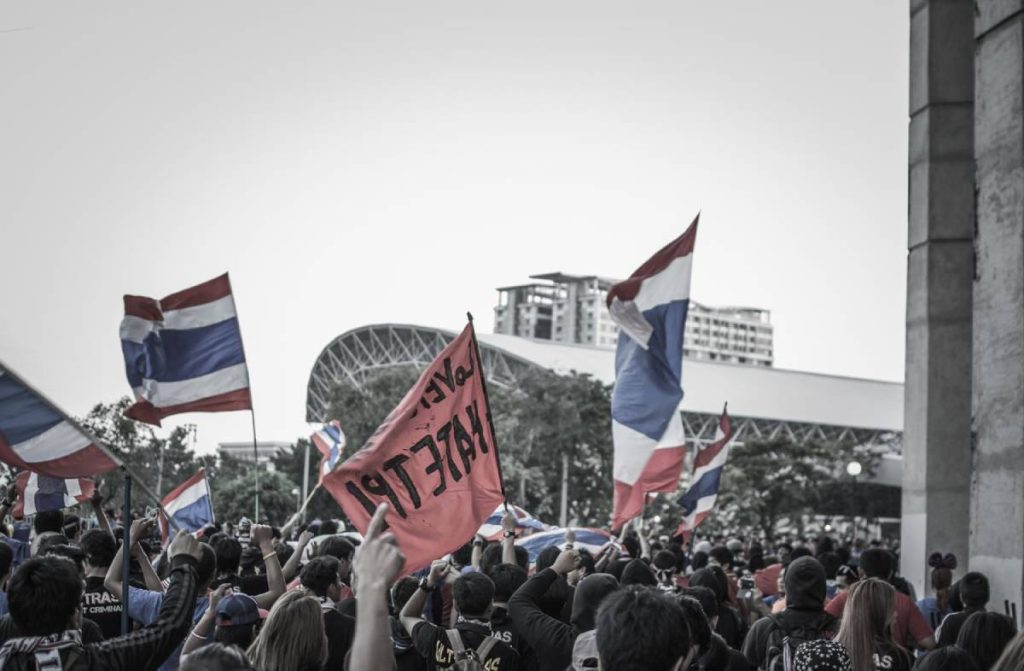The funeral of Pope Francis marked a poignant farewell to a leader who touched countless lives worldwide, as millions gathered to honor his legacy. Held in St. Peter’s Square, the ceremony attracted luminaries from around the globe, highlighting Pope Francis’ unwavering commitment to the marginalized and the poor. This moving tribute included a heartfelt eulogy from Cardinal Giovanni Battista Re, who celebrated Francis as “a pope among the people” and a guardian of social justice. As the world reflected on the profound impact of Pope Francis’ death, the outpouring of support from Catholic faithful and dignitaries alike served as a testament to his mission of inclusivity and compassion. The echoes of his inspiring teachings will resonate for generations, cementing his status as a pivotal figure in modern history and underscoring the ongoing significance of his papal legacy.
Honoring the life and ministry of Francis, the memorial service was a significant moment for both spiritual leaders and believers around the world. The once-in-a-lifetime ceremony, which followed Pope Francis’ recent passing, allowed mourners to celebrate his commitment to the impoverished and vulnerable members of society. Esteemed guests, including heads of state and representatives from various faiths, came together to commemorate what was not just a pope’s death, but the continuation of a transformative legacy focused on compassion and humility. This profound event served as a reminder of the enduring values that Pope Francis embodied, ensuring his influence would continue to shape the future of the Catholic Church and its followers. As the global community reflected on the funeral of Pope Francis, discussions about his guiding principles and vision for a more inclusive church emerged vibrant and hopeful.
Pope Francis Funeral: A Global Farewell
The funeral of Pope Francis was a momentous occasion that drew millions of eyes across the globe. Held at St. Peter’s Square, this event saw an overwhelming turnout of about 250,000 mourners, including notable world leaders and Catholic faithful who came together to honor the legacy of a beloved pontiff. Pope Francis, who served as the first Latin American pope, was revered for his commitment to serving the marginalized and voicing the issues that profoundly affected the poor and the downtrodden. His funeral reflected this profound connection, showcasing a blend of solemnity and celebration, with attendees celebrating his life and contributions even as they mourned his passing.
With towering screens broadcasting the service live, those who couldn’t physically attend still felt united in their grief and respect for the pontiff. The presence of powerful figures like U.S. President Joe Biden and former President Donald Trump highlighted the impact Pope Francis had on the world stage, transcending borders and divisions. This environment allowed for a unique blend of sacred remembrance alongside the visceral energy of a community joined in faith and solidarity. The outpouring of love and homage among the individuals at the service spoke volumes about Pope Francis’ relational outreach as not only a religious leader but as a true shepherd of the people.
Reflecting on Pope Francis’ Legacy
As the world bids farewell to Pope Francis, discussions about his legacy continue to unfold. Throughout his papacy, he advocated for the poorest of society, emphasizing that the Church must be a refuge for everyone, particularly those who feel marginalized. This conviction was highlighted in Cardinal Giovanni Battista Re’s eulogy, where he recounted Francis’ relentless commitment to social justice, exemplified by his trips to migrant camps and his calls for action on climate change. His legacy is not just in his words, but also in his actions that demonstrated compassion and empathy, reminding us of the importance of serving others.
Pope Francis’ legacy also encompasses his reformative approach to the papacy itself. His desire to simplify the Vatican’s rites reflects a humility that distinguishes him from previous popes. His mission to exemplify a ‘poor church for the poor’ has inspired many, pushing for a Church that truly embodies the teachings of compassion and outreach. As discussions arise about his impact on future Church leadership, it is imperative to remember that the echoes of his teachings will continue to resonate within the hearts of believers around the world, shaping a new generation committed to social equity and justice.
World Leaders Unite in Mourning
The global impact of Pope Francis was unmistakably portrayed through the attendance of various world leaders at his funeral. With notable figures such as U.N. Secretary-General António Guterres and European royals present, it was evident that his influence reached beyond religious lines. The gathering served as a poignant reminder of how key political figures eagerly acknowledged the pope’s efforts to promote peace, understanding, and humanitarian outreach. It was a demonstration that his message transcended faith, uniting diverse leaders in a shared reverence for his contributions to global issues.
In the wake of his passing, leaders like Ukrainian President Volodymyr Zelenskyy and Argentine President Javier Milei used this moment to reflect on their relationships with the Church. The interactions between world leaders, including private meetings such as between President Trump and Zelenskyy, illustrated the strategic importance of Pope Francis’ voice on key international issues, particularly those surrounding conflict and morality. His legacy as a bridge-builder and a champion of the voiceless will echo throughout future dialogues, reminding everyone of the power of compassionate leadership.
Pope Francis’ Reformative Vision for the Church
Pope Francis envisioned a Church that was accessible, inviting, and fundamentally focused on the needs of the less fortunate. His commitment to reform was evident as he meticulously curated his funeral rites to reflect a simpler, more humble approach to papal traditions. By simplifying these rituals, he aimed to showcase the Church’s essence as a welcoming entity rather than as a symbol of power. This has transformed the landscape of the Catholic Church, setting a precedent for future leaders to follow in prioritizing the pastoral role over institutional authority.
Furthermore, his actions and teachings related to social justice, compassion, and environmental consciousness have instilled a renewed urgency among clergy and laypeople alike to engage with the world’s most pressing issues. Pope Francis’ emphasis on inclusivity—especially towards migrants, the homeless, and the marginalized—reminded everyone of the Church’s role as a ‘home for all.’ As we reflect on his leadership style, it becomes imperative to consider how future papacies might continue to embody his vision of a Church that serves with love and dignity.
The Celebratory Mood Amidst Mourning
Despite the solemn nature of Pope Francis’ funeral, many attendees noted a surprising celebratory spirit throughout the service. Young people and pilgrims celebrating their faith exemplified this vibrant atmosphere, taking selfies and singing hymns amidst the cries of mourning. The juxtaposition of grief and hope signified the deep affection and appreciation the faithful held for the pope, who was often seen interacting with youth and encouraging an open dialogue about faith and societal issues. This connection played a crucial role in making the funeral a communal event filled with feelings of joy for the life that Francis led.
As attendees honored Pope Francis’ memory, the collective enthusiasm among the crowd, particularly among young pilgrims, illustrated the lasting impact he had on the Church’s future. These moments of camaraderie among mourners, whether they be students from youth groups or other members of the congregation, served to remind the world of the pope’s motivating and transformative energy. It’s a testament to his ability to inspire joy and action within his followers, highlighting that while his physical presence is missed, his spirit and teachings will continue to thrive among the faithful.
Honoring the Poor and Marginalized
A central aspect of Pope Francis’ papacy was his unwavering commitment to the marginalized. His funeral presented a profound acknowledgment of this commitment through the planned journey of his coffin, which was set to be greeted by groups representing the homeless, the imprisoned, and refugees upon its arrival at St. Mary Major Basilica. This gesture reinforced his belief that the Church must prioritize those who are often forgotten by society and placed on the margins, embodying his message that ‘the poor have a privileged place in the heart of God.’ His dedication to advocating for these populations solidified his role as a transformative leader.
As the funeral continued with the emphasis on honoring marginalized groups, the symbolic presence of special guests organized by the Vatican’s Caritas charity served as a physical manifestation of Pope Francis’ life’s work. It reflected his deep affection for those whom society often overlooks, thus reminding the Church of its calling to serve. This unique aspect of his farewell illustrates how integral his mission was not only during his life but also in how he continues to inspire future efforts towards social justice and humanitarian outreach in the Catholic tradition.
The Role of Technology in the Last Goodbyes
In our digital age, technology played a key role during the funeral of Pope Francis, allowing millions to partake in the ceremony from around the world. With broadcasts available on television and online streaming, people who couldn’t physically attend St. Peter’s Square were still able to witness the emotional tributes and the vibrant atmosphere surrounding the event. The use of technology not only amplified the reach of the ceremony but also provided a poignant avenue for the Church to connect with a global audience, allowing for a quality of participation previously unseen in such monumental assemblies.
Additionally, giant screens were strategically placed along the streets as Francis’ funeral procession made its way through Rome, ensuring that the collective grief and joy of the community could be engaged fully. Pilgrims and locals alike came together in unity, regardless of their backgrounds, to share in the experience of bidding farewell to a man who was both a spiritual and global leader. The technological integration of the funeral highlighted the relevance of modern communication methods in fostering global community and connection during times of shared loss.
Preparations for a New Papacy Following Francis’ Death
As the world mourns Pope Francis, preparations begin for the election of his successor, a process steeped in historical significance. With the conclave anticipated to commence shortly, many are looking ahead to how the selection might influence the Catholic Church’s trajectory and respond to the vast challenges of the contemporary world. Discussions surrounding the characteristics and qualities desired in the next pope have started to emerge, reflecting Francis’ own vision of social justice, humility, and compassion as a guiding principle for the Church moving forward.
This transitional period invites the Church to reflect on the ideals that Pope Francis introduced during his tenure. The importance placed on community outreach, environmental consciousness, and political engagement echoes the urgency of looking forward to a leadership that resonates with future generations. While the legacy of Pope Francis will undoubtedly shape the discussions and considerations during the conclave, the anticipation surrounding the appointment of a new pope reminds us of the eternal continuity of leadership and faith as the Church embraces its next chapter.
The Significance of St. Mary Major Basilica
The choice of St. Mary Major Basilica as the final resting place for Pope Francis carries deep symbolic meaning. This historic site holds significance in the Jesuit tradition and was a place where Francis prayed before each of his international trips. By choosing to be laid to rest at St. Mary Major, he reaffirmed his spiritual connection to the basilica and its historical ties to his Jesuit roots. It reflects a final wish for the continued growth of the Church as a nurturing home for believers and a source of guidance in faith.
Moreover, St. Mary Major is home to the revered Madonna icon, Salus Populi Romani, which Pope Francis deeply cherished. This connection signifies that his spirit will linger in a place he found comforting, representing his enduring belief in the protection and guidance of the Virgin Mary over the people. The choice of this basilica for his epitaph also serves as a poignant reminder of the lasting legacy he leaves behind, as well as the spiritual bond between the pope and the Church, illustrating his hope that future generations will carry forward the messages of compassion, humility, and service.
Frequently Asked Questions
What was the significance of Pope Francis’ funeral?
The funeral of Pope Francis was significant as it highlighted his legacy as a pope deeply committed to the marginalized, embodying an inclusive spirit while remaining connected to the people. His memorial was attended by world leaders and ordinary faithful, reflecting his impact across different strata of society.
When did Pope Francis pass away and what were the circumstances?
Pope Francis passed away on Easter Monday at the age of 88 after suffering a stroke while recovering from pneumonia. His death marked the end of a pope’s remarkable journey that focused on compassion and service to the underprivileged.
Who delivered the eulogy at Pope Francis’ funeral?
During the funeral of Pope Francis, Cardinal Giovanni Battista Re delivered the eulogy, praising Francis as the ‘pope of the people’ who communicated with warmth and kindness to the ‘least among us.’
What was the atmosphere like during Pope Francis’ funeral?
The atmosphere at Pope Francis’ funeral was a blend of somber reflection and festive commemoration, with approximately 250,000 mourners gathering to express their grief and gratitude, even capturing moments through selfies amidst the ceremony.
Where will Pope Francis be buried?
After his funeral, Pope Francis will be laid to rest in St. Mary Major Basilica, which holds personal significance for him. The choice signifies his bond with the marginalized, as the basilica is where he regularly prayed before and after his trips.
How did Pope Francis influence the Catholic Church?
Pope Francis sought to reform the Catholic Church by emphasizing a more pastoral approach, focusing on a ‘poor church for the poor.’ His legacy includes a commitment to social justice and outreach to the marginalized and oppressed.
What will happen following the funeral of Pope Francis?
Following the funeral of Pope Francis, preparations will begin for the conclave to elect a new pope, expected to start in early May. Until then, the Vatican will be managed by a select group of cardinals.
What unique aspects did Pope Francis incorporate into his funeral?
Pope Francis orchestrated his funeral to reflect his wishes by simplifying the Vatican’s rites, emphasizing his role as a humble pastor rather than a worldly power, in keeping with his 12-year vision for a more servant-oriented papacy.
Who were some notable attendees at Pope Francis’ funeral?
Notable attendees at the funeral of Pope Francis included world leaders such as U.S. President Donald Trump and former President Joe Biden, as well as Ukrainian President Volodymyr Zelenskyy and various European royals, symbolizing his global influence.
What was the role of the marginalized in Pope Francis’ funeral?
In a tribute to his unwavering commitment to the marginalized, special guests from various underprivileged groups—such as homeless individuals and migrants—were present at the funeral, exemplifying Pope Francis’ dedication to their dignity and welfare.
| Key Highlights | |
|---|---|
| Event Location | St. Peter’s Square, Rome |
| Attendance | Approximately 250,000 people |
| Main Theme | Celebration of Pope Francis as a ‘Pope of the People’ |
| Key Speakers | Cardinal Giovanni Battista Re delivered the eulogy |
| Focus of the Funeral | Pope’s concern for the marginalized, including migrants and the poor |
| Significant Attendees | World leaders like Trump, Biden, and Zelenskyy were present |
| Final Resting Place | St. Mary Major Basilica, honoring Pope Francis’s connection to the marginalized |
Summary
Pope Francis Funeral marked a profound farewell to the beloved leader exemplified by his unwavering commitment to the marginalized. The service, which drew an astonishing crowd of 250,000 attendees, celebrated his life as the ‘Pope of the People,’ focusing on his mission to uplift those on the peripheries of society. Cardinal Giovanni Battista Re highlighted this commitment in his heartfelt tribute, echoing the sentiments of those who admired Francis’ simplicity and compassion. As the world watches the transition to a new papacy, the legacy of Pope Francis, who passed away at 88, continues to inspire hope and service, particularly towards the poor and the outcast.



